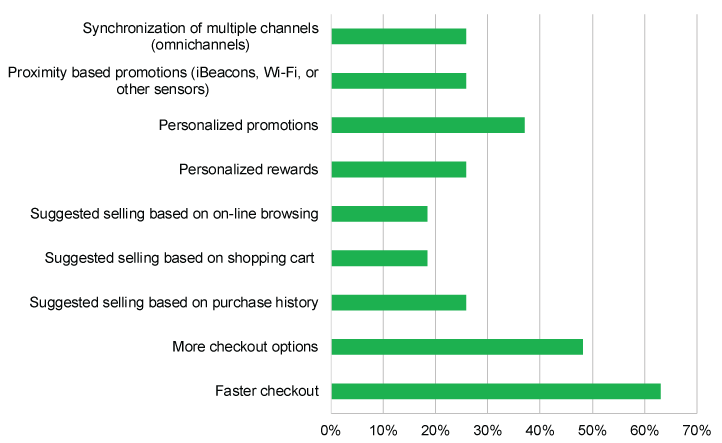Enterprise Mobility & the Connected Worker Blog
COVID-19 Impacts Consumer Behavior, Grocery Retail
by Rowan Litter | 05/01/2020
The COVID-19 virus changed every day life in an instant. People around the world are stuck inside while countries institute prolonging stay-at-home and lockdown procedures. As a result, businesses deemed non-essential are shutting doors, some forever. For the same week in March, U.S. retail foot traffic was down 97.6% this year compared to last year. These societal changes are impacting consumer behaviors, creating more demand for e-commerce. In 2019, only about 3% of grocery sales occurred online; however, that is expected to grow 13% (CAGR) through 2024. To adjust for these behavioral changes, suppliers will have to adjust their own behaviors and business models. If one thing is clear, this pandemic will accelerate digital transformation globally.
As essential businesses, retail grocery stores and supermarkets have to quickly evolve to serve changes in the market. An online grocery shopping survey conducted by Brick Meets Click/ShopperKit found that 31% of U.S. households used an online grocery delivery or pickup service in March 2020 compared to only 13% in August 2019. The biggest challenge of transitioning to an online business model is maintaining great customer experience. Companies will issue large Requests for Proposals to help digitalize the business; in order to be successful, customer experience has to be the primary concern of such projects. Last year, VDC Research conducted a global survey about what leading strategies improve customer shopping experience. The top strategy among grocery shoppers was faster checkouts with 63% of responses; the second strategy was more checkout options (self-checkout, express lanes, large-order lanes, associate mobile POS, and customer mobile applications) with 48.2% of responses. It seems customers biggest concerns at the grocery store are getting out of the store quickly and efficiently. Digitalizing business is one way to address these consumer concerns. A UK division of Walmart, ASDA released its Scan & Go mobile application last year that lets shoppers scan items on their mobile device as they shop. After customers are done shopping, their device receives a code where they can proceed to a Scan & Go checkout, making the process completely contactless.
(Global Survey: Grocery Respondents)

When creating these digital projects, such as applications and online services, grocers must put themselves in the shoes of the shopper and ask themselves, is this site transparent? Is it easy-to-navigate? Is there online support? If not, than the project will fail. So far, the current market is not prepared for the mass influx of online demand. A recent survey by EMeals finds that 28% of people using online grocery services experienced delays or cancellations and 51% had to wait two or more days for the delivery. Under the circumstances of the pandemic, shoppers are giving grocers a pass. In the same survey, 97% of respondents indicated they will continue to use online grocery despite issues. Those companies that can have and maintain reliable online services amidst these drastic changes will most likely emerge as leaders in grocery e-commerce. Pickup and delivery services like Walmart Grocery Delivery, and Instacart have already materialized over the past few years, but the sector as a whole has been relatively slow to adopt successful digital business models.
The investments made during these times will be critical for the future and success of the grocery retail market. One project for businesses could be to turn a section of the grocery store into a micro-fulfillment center purely for delivery orders. Automating processes, investing in technology and exploring new models of supply and distribution must be seriously considered as these consumer trends stick post-lockdown. While the pandemic continues to keep people at home, grocers that are able to optimize online business models and operations will be best-positioned once COVID-19 has passed.
To learn more, view the Enterprise Mobility & the Connected Worker Research Outline.